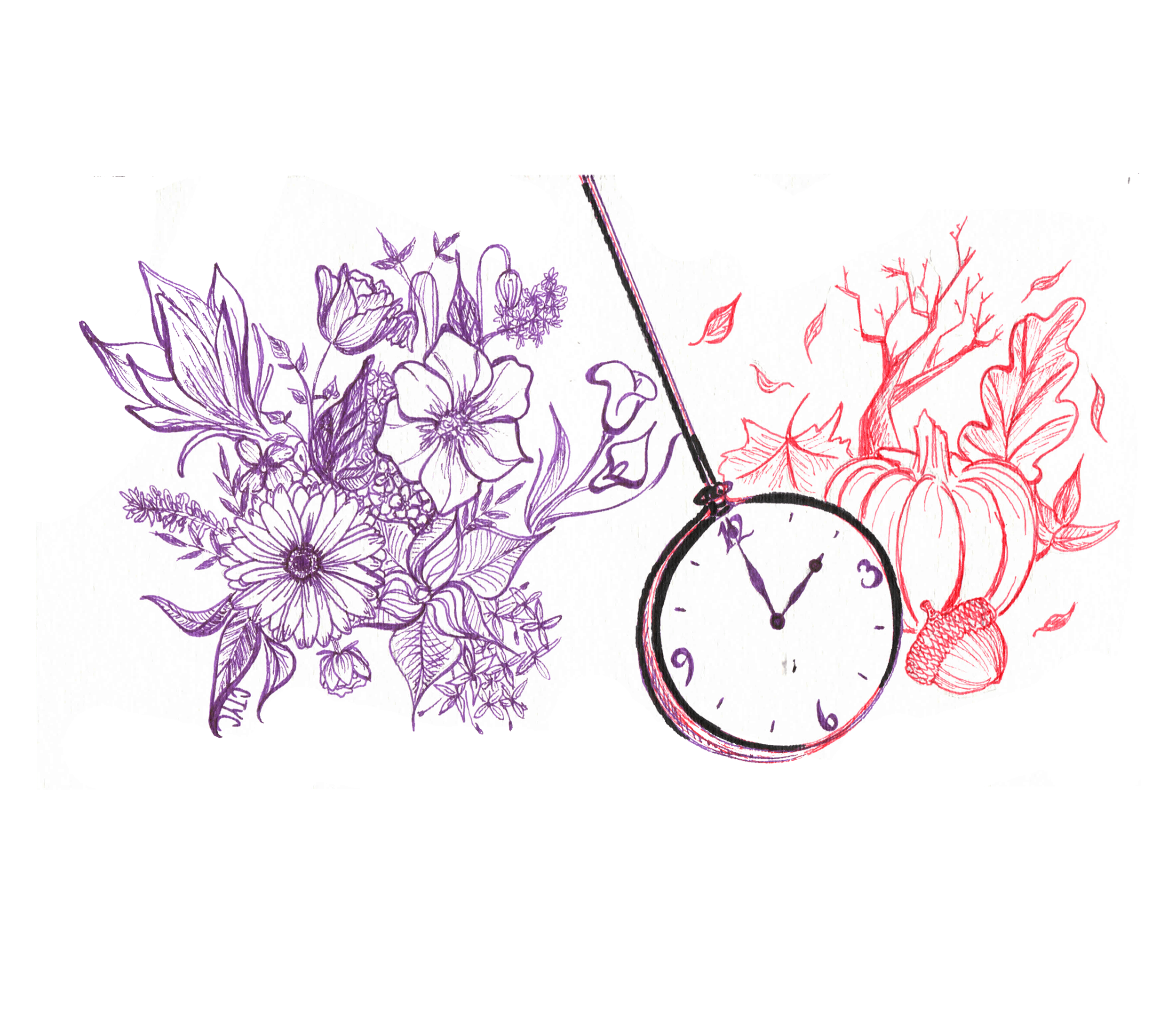Two weekends ago, thousands of students rejoiced at the end of daylight saving time (DST) and gained an extra hour of sleep.
DST, a day-lengthening concept, was adopted by Canadians in the early 1900s as an energy-saving measure. But there is no conclusive evidence that we save energy by turning the clock forward. Few alleged benefits of DST remain relevant today, and scientists are beginning to better understand the negative effects that a one-hour time shift can have on our bodies and behaviour.
Hormones, body temperature, and other aspects of our physiology are influenced by exposure to sunlight. These are known as our body’s diurnal circadian rhythms. Researchers have found that DST disrupts these natural rhythms. Circadian disruptions can lead to immune deficiencies, metabolic abnormalities, and most notably, abnormal sleep cycles.
Loss of sleep can increase the possibility of making life-threatening errors. Research has shown that at the start of DST, the resulting loss in sleep correlates with a rise in traffic accidents. This effect is reversed in the fall, as the number of accidents drops after DST ends.
Lack of sleep not only affects your commute, but it can also have negative consequences at work. According to a 2009 study, the incidence of workplace injuries increased on the Monday after the springtime DST change. Unlike traffic accidents, there are no significant reversals in workplace injury risk in the fall.
Issues associated with DST are not exclusive to the winter season. Prior to the time change last week, Toronto Police issued a warning to Torontonians about the earlier nights. What would have been a sunset at 6:00 pm is now at 5:00 pm. In addition to more severe weather, commuters heading home from work will be driving in less visible conditions. With the dark days ahead, it is suggested that you take steps to make yourself more visible at night.
Shorter days also have psychological effects. In Toronto, we see a six-hour decrease in daylight in the fall compared to what we experience in peak summer. Exposure to sunlight during the day has an overall positive effect on well-being because it maintains our circadian rhythms. With the sudden time change imposed as DST ends, individuals may find themselves in psychological distress.
A study published in Epidemiology this May ties this distress with increased rates of depressive episodes. The end of DST marks the beginning of dark winters, which can act as a bad psychological aggravator for those prone to depression — those who suffer from seasonal affective disorder (SAD) may be particularly susceptible.
About 15 per cent of Canadians will experience a mild form of SAD at some point in their lives. Students who are feeling unwell are advised by the university to seek out campus resources such as the Health and Wellness Centre. Robarts Library has started providing light therapy lamps to students — an effective means of mimicking lost sunlight.
It is increasingly evident that dialling our clocks back and forth can have a negative impact on our health and safety. So why do we still have DST?
Although DST does not actually provide us with more hours of sunlight, it does increase the amount we are exposed to on a typical day, and most people consider this to be favourable. If DST did not exist, Toronto would experience a 4:30 am sunrise at the peak of summer.
For this reason, some people have even suggested implementing DST year-round. This would maintain the perception of ‘normal time’ and avoid the negative impacts that come from adjusting our clocks twice a year.
DST continues to be a topic of controversy in Canada. Recently, Alberta tried to pass legislature on abolishing the practice, but the bill was overwhelmingly voted against. Saskatchewan is currently the only province in Canada that does not implement DST.


